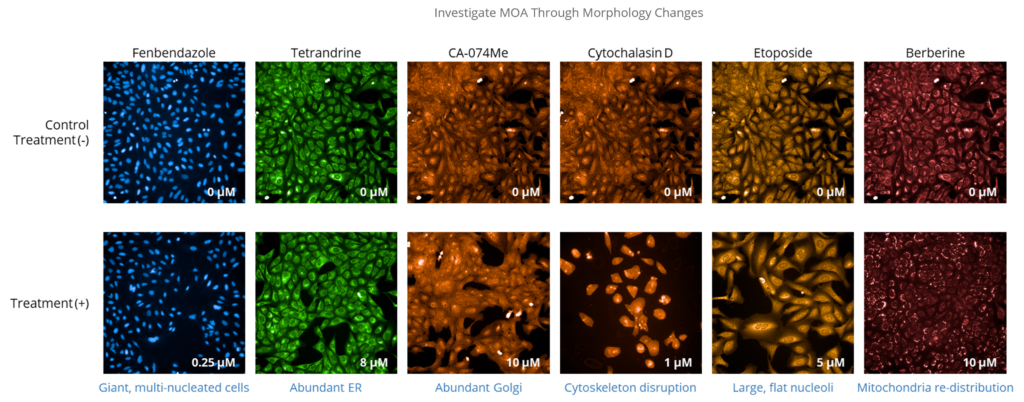In Vitro Screening Platform
WuXi Biology offers a comprehensive in-vitro screening platform equipped with the latest technologies to identify novel hits with high precision and reliability. Our advanced array of screening technologies, including high-throughput screening (HTS), fragment screening, DNA-encoded libraries (DEL) technology, affinity selection mass spectrometry (ASMS), display technologies, SELEX, and virtual screening, are designed to uncover both small molecule and new modality hits, addressing the full spectrum of your discovery needs.
With over 15 years of experience, our platform excels at executing hit identification campaigns that align seamlessly with your research objectives. Incorporating WuXi Biology’s proprietary library collections and appropriate validation assays, we aim to deliver the most relevant hits with confidence, providing a robust starting point for your project’s success.
Screening
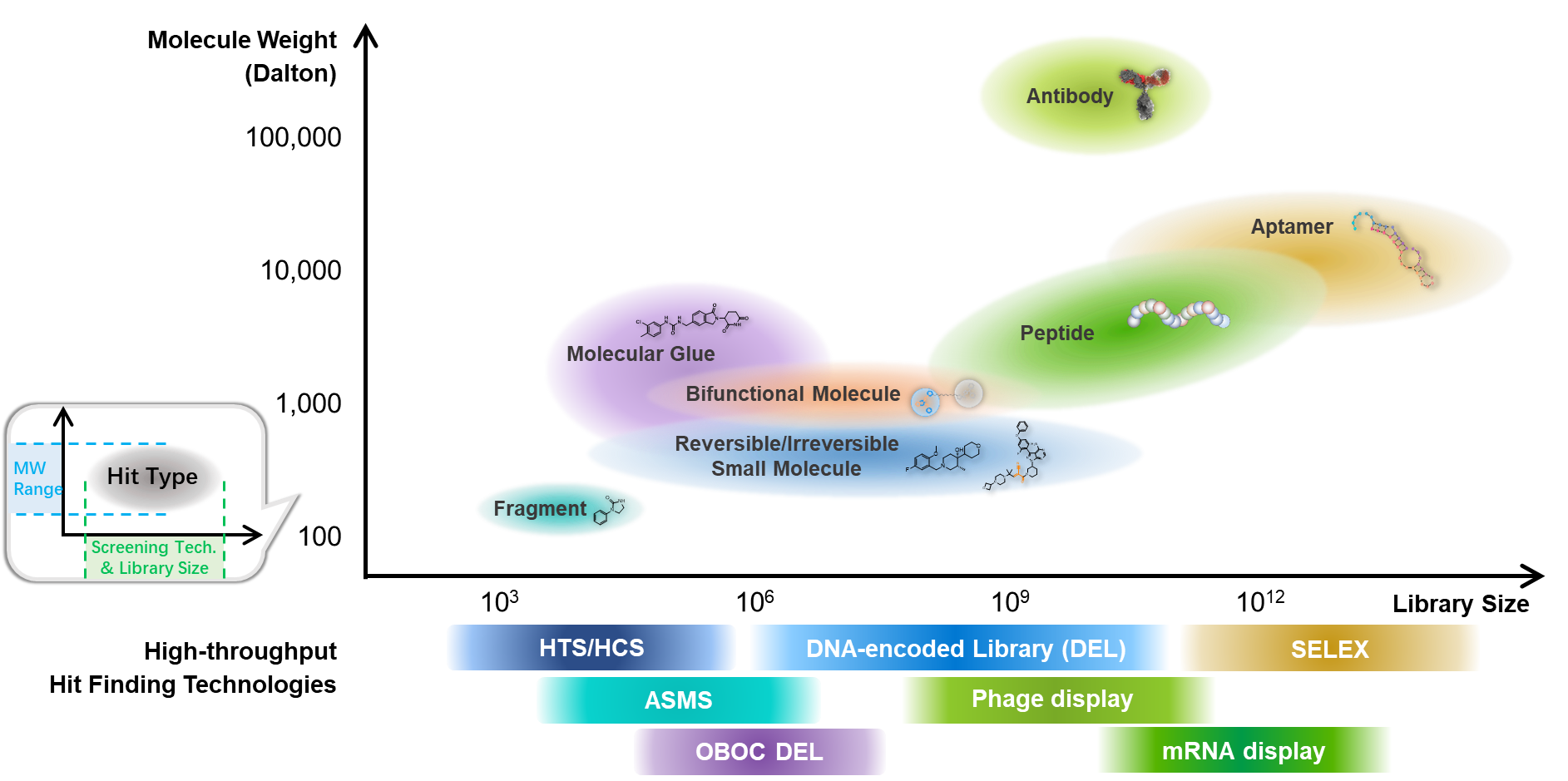
HTS Screening in Brief
Achieve months-worth of time savings in assay development
•by either choosing from a comprehensive portfolio of few hundred biochemical and cell-based assays,
•or utilizing in-depth scientific knowledge derived from the creation of hundreds of biochemical or cell-based assays.
Identify the technology that is tailored to your program´s specifications
•chose from broad range of assay readouts including fluorescence, TR-FRET, luminescence, radiometric assays, qPCR,
•phenotypic assays (e.g., high-content & multiplexing assays),
•mass spectrometry assays.
No library access fee associated with the HTS service.
| Covering all types of drug targets | ||
| GPCR | Protease | Transporter |
| Targeted Protein Degradation | Ion Channel | Transcription factor |
| Kinase | Epigenetics | Other Protein and RNA |
| Covering all types of detection | ||
| TR-FRET | HTRF | Fluorescence |
| Luminescence | AlphaScreen | Absorbance |
| Radiometry | Gene expression | Mass spectrometry |
Workflow

Automated Robotic Systems for HTS Data points/week Throughput: 60K

Supported over 200 projects
Average Turnaround time of primary screens is 3 weeks
At least 1 client project advanced into clinical study in 2024
WuXi AppTec Compound Library for HTS (370 K)
WuXi AppTec’s small molecule compound libraries are expertly designed and managed by a team of highly experienced medicinal chemists. These libraries are characterized by significant structural and target diversity, excellent physicochemical properties, and in-house derived structures. They can be screened by cherry-picking individual compounds, as complete sets, or in combination with other commercial libraries, allowing for highly customized HTS projects.
In addition, WuXi AppTec provides privileged, focused library customization services based on your specific targets or project needs.
Chemical Space
(WuXi AppTec Compound Library vs FDA Approved Drugs)


Physicochemical property distribution

Focused Libraries of Diverse Small Molecules Targeting Specific Target Families or New Modalities
Key Features:
- Designed by WuXi AppTec using structure-based, ligand-based, or fragment-based approaches.
- Balancing known chemical space and excellent novelty with untapped scaffolds.
- Validated virtually or experimentally, demonstrating a high hit rate while maintaining good target selectivity.

High Content Imaging and High Content Screening
From target identification to candidate selection
• Our High Content Imaging (HCI) and High Content Screening (HCS) Platform integrates knowledgeable cell biologists, in vitro toxicologists, sophisticated compound management system, laboratory automation and image analysis specialists.
• HCS is a high-throughput whole cell imaging format that enables the screen of thousands of compounds in complex cellular systems to identify new drug targets or new lead compounds. Multiplex cell painting techniques for example allow for the observation of various nodes in a cellular pathway simultaneously. This advanced approach can help identifying first-in-class drugs for currently intractable conditions.
• As you progress your candidate through lead optimization, you can use high content imaging to monitor compounds in complex cellular systems to predict translational success in vivo.
HCI/HCS Scenarios
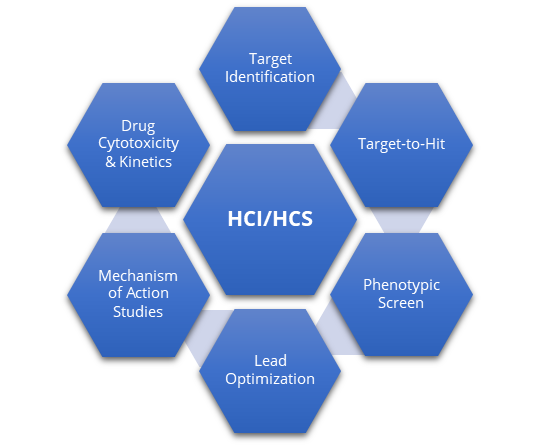
High Content Imaging as an Early Discovery Tool
•HCS is a high-throughput whole cell imaging format that enables the screen of thousands of compounds in complex cellular systems to identify new drug targets or new lead compounds. Some examples below:
Assay Application
- Immunohistochemistry
- RNAi
- Reporter gene assay
- Cytotoxicity
- Protein-protein interactions
- Proliferation or cytotoxicity
- Cell cycle
- Autophagy
- Autophagy
- Protein degradation
- DNA damage
- Morphological changes
- Protein expression
- Protein localization
- Post-translation modifications
- Developmental toxicity
- Genotoxicity (e.g., micronucleous formation)
- Neurotoxicity (e.g., neurite outgrowth)
- Hepatotoxicity (e.g., steatosis, phopholipidosis)
- Cardiotoxicity (e.g., mitochondrial oxidative stress, mitochondrial membrane potential)
- Nephrotoxicity
HCS Readout Features
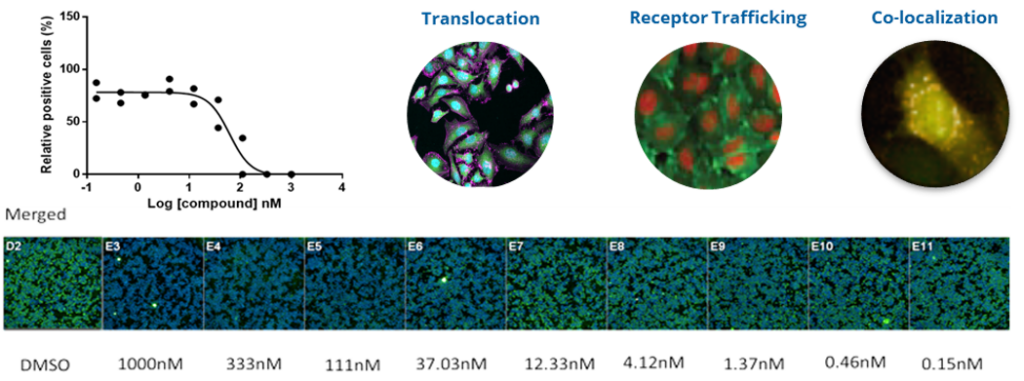
Case Study: Protein Degrader Hit Finding
- A high-throughput screening campaign was conducted to screen about 300k compounds using target protein degradation HCS assay.
HCS General Workflow

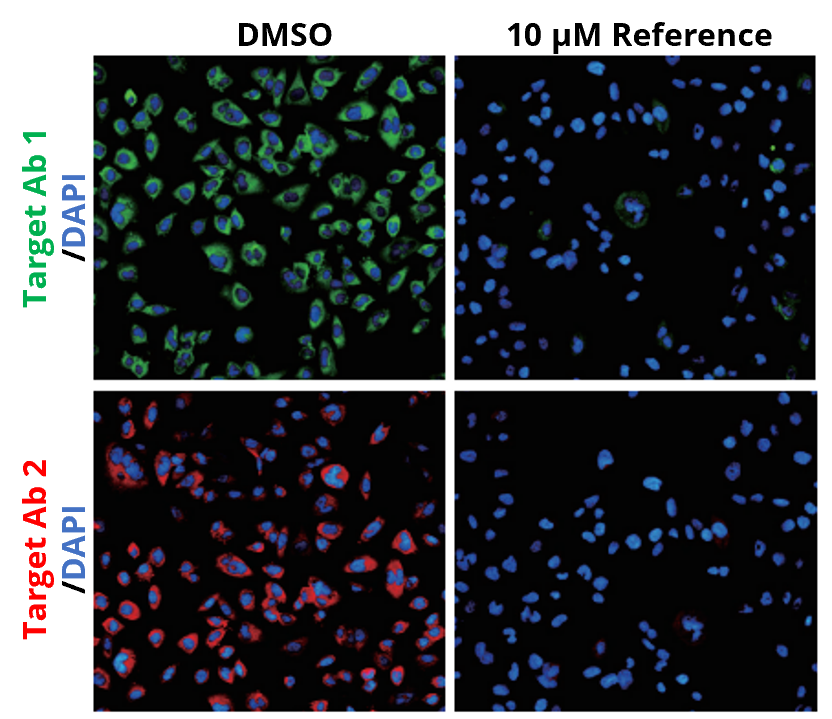
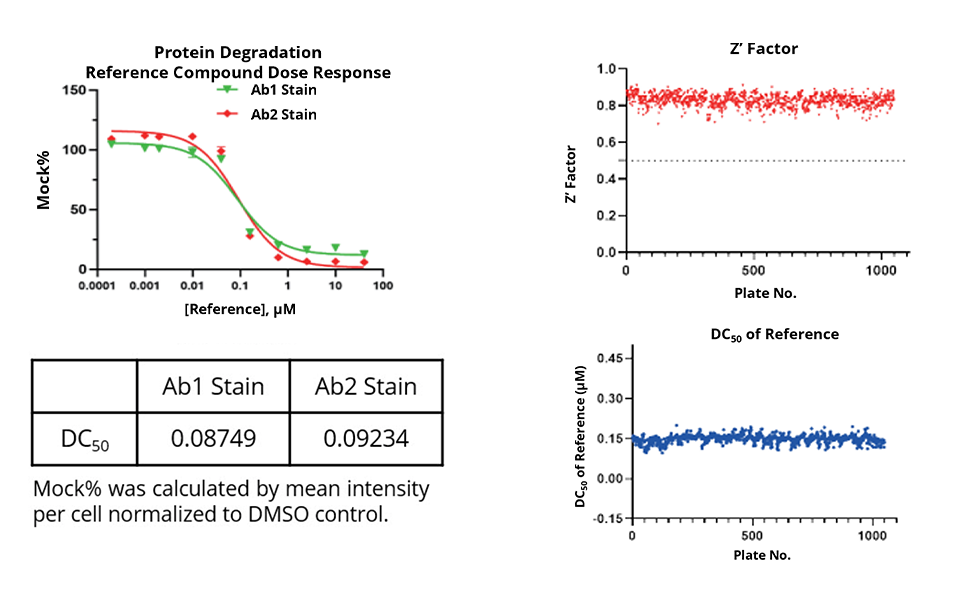
Exceptional assay data quality achieved with high-content screening of 300K compounds
Case Study: Phenotypic Screen using Cell Painting
An example: Cell Painting in the U-2 OS osteosarcoma cell line
- Cell painting is flexible, limited only by fluorescent channel overlap.
- A high-content, high-throughput imaging technique used to capture a wide array of morphological features in response to diverse perturbations.
- Unbiased phenotypic profiling that can be modified to specific screening conditions.
- A powerful tool for drug discovery and development.
- Identifying potential drug candidates, toxicity.
- Understanding MOA.
Investigate MOA Through Morphology Changes
